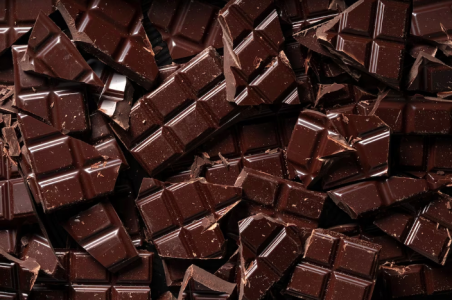Aussie shoppers are shocked by the rising prices of chocolate this Christmas season
By
VanessaC
- Replies 7
As the festive season approaches, Australians are bracing for a bitter surprise.
The price of chocolate, a staple in many households during the holiday season, is on the rise.
This increase is due to a combination of factors, including a surge in cocoa prices, supply chain disruptions, and increased demand, particularly in Asia.
Cocoa prices have seen a significant jump of over 21 per cent, largely due to widespread flooding in some of the world's primary cocoa-growing regions.
This has resulted in a supply deficit, pushing cocoa trading to its highest level in four decades.
The impact of this price hike is already being felt by consumers, especially those looking to fill their Christmas stockings with something sweet.
Sydney-based chocolatier Jin Sun Kim, Founder of Kakawa Chocolates, has been forced to increase her prices by between 10 and 15 per cent.
'We're getting emails from the chocolate supplier every two weeks, monthly, the price increasing from this date,' she shared.
'For example, cocoa butter has doubled in one year, I've never had that experience in the 14 years that I've been in the business.'
'Ever since [COVID-19], the prices keep increasing, some by double, some by 30 per cent, so we had to put our price up as well, but we can't put our price up as often as the supplier.'
Kim shared that in the lead-up to Christmas, she has had to reduce the amount of chocolates they put in each box rather than lifting their prices further.
'My customers are understanding about the situation, but you know, out of 90 per cent of the customers that are happy about 10 per cent are not happy,' Kim added.
'We try to cater, but we can't cater to all of them.'
Noel Kowald, Managing Director of Davies Chocolates, explained that several factors are driving up costs.
These include lower crop yields in cocoa-rich regions like Ghana and Côte d'Ivoire and the expectation that crop yields in West Africa won't improve quickly due to the onset of El Niño.
The continuous increase in demand at traditional markets and the greater demand in Asia due to the rising standard of living in some areas are also contributing to the price increase.
Supply chains have also seen a shortage of cocoa butter, the white fat used in chocolate and a common ingredient in ointments, toiletries, and pharmaceuticals.
'The Australian plantations are still only small. So the local volume cannot make a major difference,' Kowald explained.
'We're involved with other businesses to encourage more development in North Queensland.'
Even popular brands like Cadbury have not been immune to the price increase.
A 360g block of Cadbury Milk Chocolate, which cost $6 at Woolworths just last month, is now priced at $7.
A spokesperson from Mondelez Australia, the parent company of Cadbury, shared that despite their best efforts to absorb rising costs, it is sometimes inevitable to pass on a small price increase to the consumers.
'Like many Australian food manufacturers, we are experiencing significant increases across our supply chain, including the cost of raw materials, ingredients, packaging, freight and transportation,' the spokesperson explained.
 What are your thoughts on the rising chocolate prices? Have you noticed a difference in your favourite chocolate? Share your them with us in the comments below.
What are your thoughts on the rising chocolate prices? Have you noticed a difference in your favourite chocolate? Share your them with us in the comments below.
The price of chocolate, a staple in many households during the holiday season, is on the rise.
This increase is due to a combination of factors, including a surge in cocoa prices, supply chain disruptions, and increased demand, particularly in Asia.
Cocoa prices have seen a significant jump of over 21 per cent, largely due to widespread flooding in some of the world's primary cocoa-growing regions.
This has resulted in a supply deficit, pushing cocoa trading to its highest level in four decades.
The impact of this price hike is already being felt by consumers, especially those looking to fill their Christmas stockings with something sweet.
Sydney-based chocolatier Jin Sun Kim, Founder of Kakawa Chocolates, has been forced to increase her prices by between 10 and 15 per cent.
'We're getting emails from the chocolate supplier every two weeks, monthly, the price increasing from this date,' she shared.
'For example, cocoa butter has doubled in one year, I've never had that experience in the 14 years that I've been in the business.'
'Ever since [COVID-19], the prices keep increasing, some by double, some by 30 per cent, so we had to put our price up as well, but we can't put our price up as often as the supplier.'
Kim shared that in the lead-up to Christmas, she has had to reduce the amount of chocolates they put in each box rather than lifting their prices further.
'My customers are understanding about the situation, but you know, out of 90 per cent of the customers that are happy about 10 per cent are not happy,' Kim added.
'We try to cater, but we can't cater to all of them.'
Noel Kowald, Managing Director of Davies Chocolates, explained that several factors are driving up costs.
These include lower crop yields in cocoa-rich regions like Ghana and Côte d'Ivoire and the expectation that crop yields in West Africa won't improve quickly due to the onset of El Niño.
The continuous increase in demand at traditional markets and the greater demand in Asia due to the rising standard of living in some areas are also contributing to the price increase.
Supply chains have also seen a shortage of cocoa butter, the white fat used in chocolate and a common ingredient in ointments, toiletries, and pharmaceuticals.
'The Australian plantations are still only small. So the local volume cannot make a major difference,' Kowald explained.
'We're involved with other businesses to encourage more development in North Queensland.'
Even popular brands like Cadbury have not been immune to the price increase.
A 360g block of Cadbury Milk Chocolate, which cost $6 at Woolworths just last month, is now priced at $7.
A spokesperson from Mondelez Australia, the parent company of Cadbury, shared that despite their best efforts to absorb rising costs, it is sometimes inevitable to pass on a small price increase to the consumers.
'Like many Australian food manufacturers, we are experiencing significant increases across our supply chain, including the cost of raw materials, ingredients, packaging, freight and transportation,' the spokesperson explained.
Key Takeaways
- Aussie shoppers are facing a price increase in chocolate due to a 21 per cent increase in cocoa prices.
- The increase is due to flooding in major cocoa-growing regions and the high demand for chocolate.
- Chocolatier Kakawa Chocolates has been forced to reduce the quantity of chocolates sold per box rather than increase their prices.
- Price increases have also been noticed at major retailers such as Woolworths, due to increased costs of raw materials, packaging, freight and transportation.








